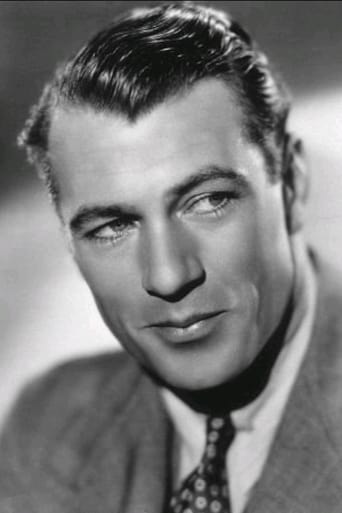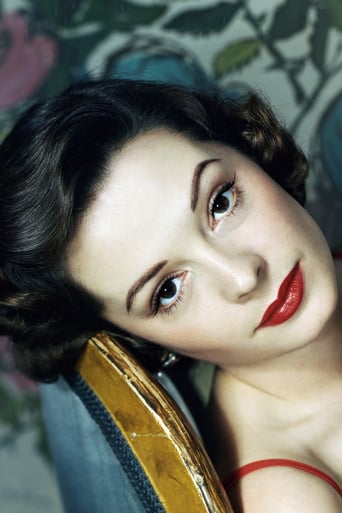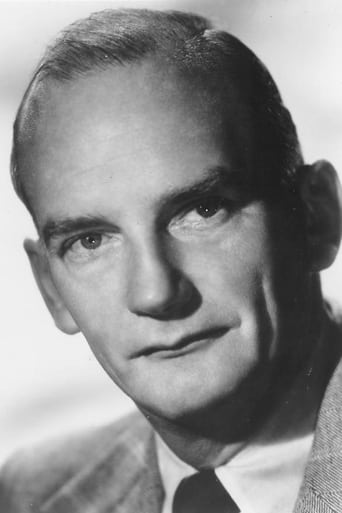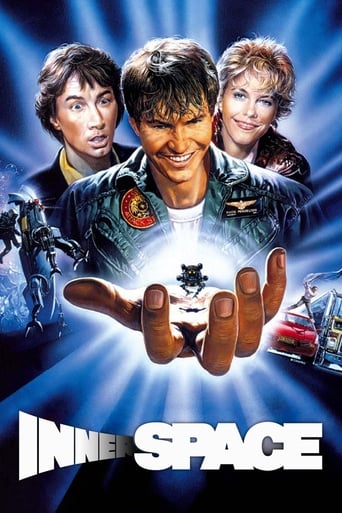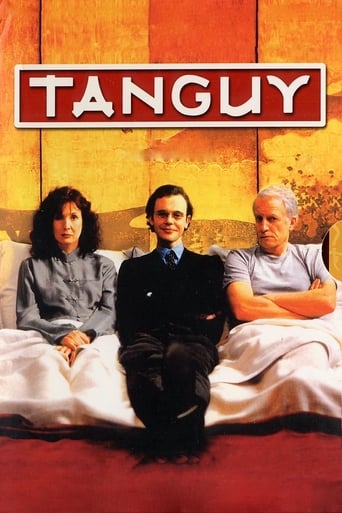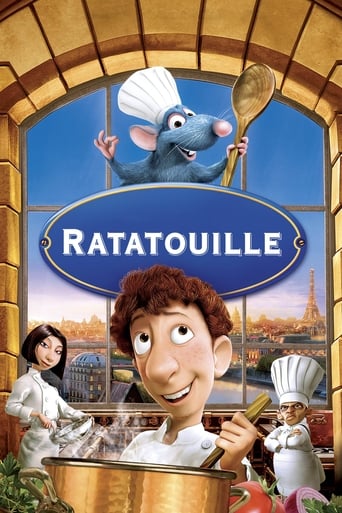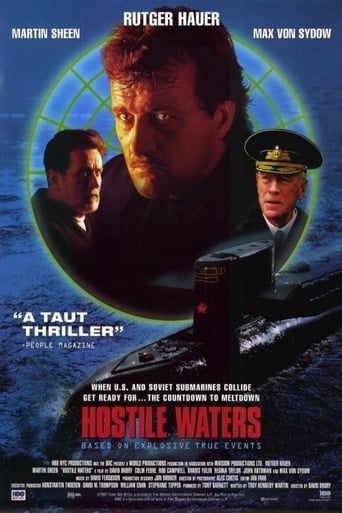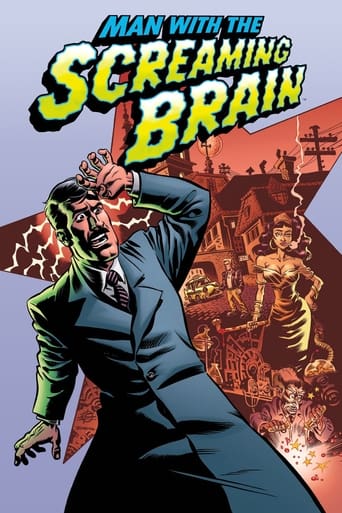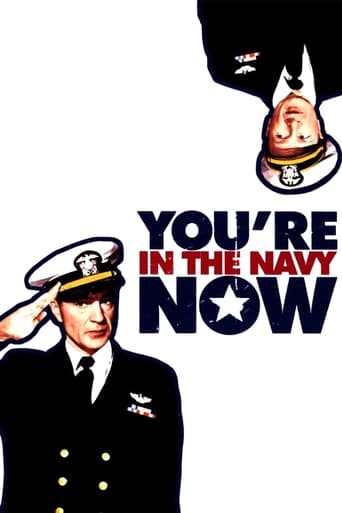
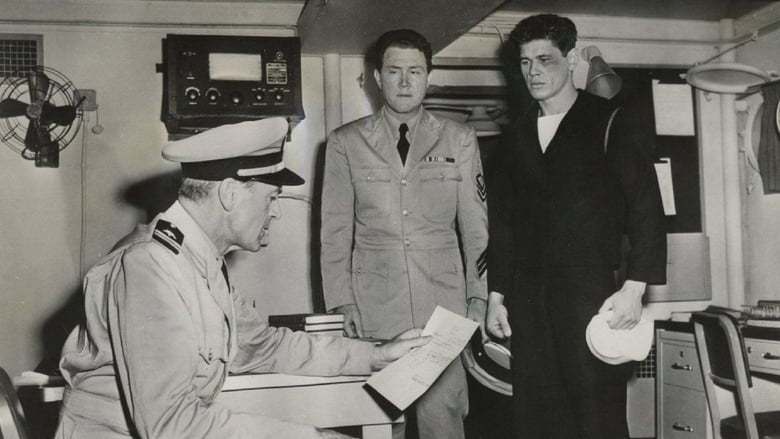
You're in the Navy Now (1951)
When Lt. John Harkness is assigned as the new skipper of a submarine chaser equipped with an experimental steam engine, he hopes that the U.S.S. Teakettle's veterans will afford him enough help to accomplish the ship's goals. Unfortunately, he finds the crew and its officers share his novice status or only have experience in diesel engines.
Watch Trailer
Cast
Similar titles
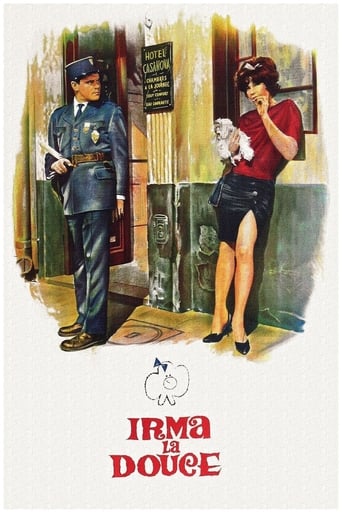
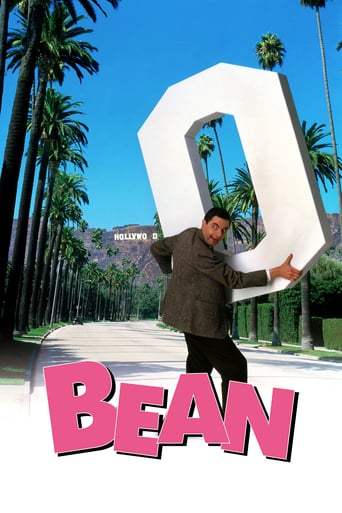
Reviews
Don't listen to the negative reviews
As Good As It Gets
A Major Disappointment
This is a coming of age storyline that you've seen in one form or another for decades. It takes a truly unique voice to make yet another one worth watching.
Gary Cooper stars in this WWII comedy, released several years after the wars' finish, about the various experiments that the Navy conducted with machines and equipment. Cooper plays John W. Harkness, a Reserve officer assigned to commandeer a ship that's been outfitted with a steam engine. He's basically as inexperienced as his misfit crew, and dealing with them occupies practically as much time as trying to make their infernal steam engine work.Likeable and lively, "You're in the Navy Now" was scripted by Richard Murphy, based on a New Yorker article by John W. Hazard, and directed by Henry Hathaway. While it may never be truly uproarious, it generates enough modest chuckles to keep it watchable. The "misfits make good" formula has been a part of cinema for a long, long time, and here it makes for a decent story, as we come to respect and admire these men when they learn how to work together, and keep that engine running. A subplot about beefy sailor Wascylewski (Charles Bronson) selected to represent the ship in a boxing match also takes up some of the running time.Cooper gets to do something a little different here, in contrast to the more accomplished heroes he'd played before. Here he is rather overwhelmed, and plays it just right. The lovely Jane Greer gets a handful of scenes as his supportive wife, but what is most impressive is the roster of actors filling out roles: Jack Webb, John McIntire, Ray Collins, Millard Mitchell, Eddie Albert, Richard Erdman, Harvey Lembeck, Ed Begley, etc. Real-life WWII veterans Bronson, Lee Marvin (in a bit part as a radio man), and Jack Warden made their film debuts here, along with Lembeck.Filmed with full military cooperation, the film does have the feel of authenticity, and moves along well to an amusing climax with a LOT of near misses.Seven out of 10.
Gary Cooper (Lieutenant John Harkness), Jane Greer (Ellie), Millard Mitchell (Larrabee), Eddie Albert (Lieutenant Bill Barron), John McIntire (Commander Reynolds), Ray Collins (Admiral Tennant), Harry Von Zell (Captain Eliot), Jack Webb (Ensign Anthony Barbo), Richard Erdman (Ensign Chuck Dorrance), Harvey Lembeck (Norelli), Henry Slate (Ryan, chief engineer), Ed Begley (commander), Fay Roope (battleship admiral), Charles Tannen (Houlihan), Charles Buchinsky (Bronson) (Wascylewski), Jack Warden (Morse), Ken Harvey, Lee Marvin, Jerry Hausner, Charles Smith (crew members), James Cornell (new sailor), Glen Gordon, Laurence Hugo (shore patrolmen), Damian O'Flynn (doctor), Biff McGuire (sailor messenger), Norman McKay (admiral's aide), John McGuire (naval commander), Elsa Peterson (admiral's wife), Herman Cantor (naval captain), Joel Fluellen (mess boy), William Leicester (chief petty officer), Ted Stanhope (naval officer), Rory Mallinson (lieutenant commander), Bernard Kates (tugboat sailor).Director: HENRY HATHAWAY. Screenplay: Richard Murphy. Based on an article "Flying Teakettle" by John W. Hazard published in The New Yorker magazine of 21 January 1950. Photography: Joe MacDonald. Film editor: James B. Clark. Music composed by Cyril Mockridge, orchestrated by Edward B. Powell, directed by Lionel Newman. Art directors: Lyle Wheeler, J. Russell Spencer. Set decorators: Thomas Little, Fred J. Rode. Wardrobe supervisor: Charles Le Maire. Make- up: Ben Nye. Special photographic effects: Fred Sersen, Ray Kellogg. Technical adviser: Chief Boatswain Joseph Warren Lomax, USN. Sound recording: W. D. Flick, Roger Heman. Producer: Fred Kohlmar. Copyright 23 February 1951 by 20th Century-Fox Film Corp. New York opening at the Roxy: 23 February 1951. U.S. release: January 1951. U.K. release: 28 May 1951. Australian release: 26 October 1951. 8,345 feet. 93 minutes.Original U.S. release title: "U.S.S. Teakettle."SYNOPSIS: Volunteering for the Navy, Lieutenant Harkness (Gary Cooper) is posted to command an experimental submarine-chaser. As neither he nor any member of the crew, with the exception of the boatswain, has the slightest knowledge of seamanship, some pretty hectic test cruises are undertaken.NOTES: Film debut of Charles Bronson, under his real name, Charles Buchinsky.COMMENT: As he had done in the 1940s, director Henry Hathaway strode like a veritable Colossus through the 1950s. Admittedly, the introduction of the anamorphic screen saw — oddly enough, since he was a master of action and location shooting — a diminution of his powers, particularly in Legend of the Lost (1957), but the end of the decade saw him right back in top form with "North to Alaska". Like that latter success," You're in the Navy Now" is one of Hathaway's rare comedies. However, unlike Alaska (which was one of the most popular films of the year), Navy failed to find an audience and was eventually marketed as a "B". Yet it is not only well made, with all the usual Hathaway virtues and strengths, but it's very entertaining. I can't do better than quote Homer Dickens who wrote in his excellent entry in the famous Citadel books series, The Films of Gary Cooper: "Never was Cooper more delightful or winning."Originally filmed as U.S.S. Teakettle, 20th Century-Fox actually released the film with this title in February of 1951. Despite glowing reviews, the audience response was nil and a change of title was thought necessary. Immediately thereafter, it came out as "You're in the Navy Now".The part was Cooper's first starring role at 20th Century-Fox and marked his first visit to that great studio since the early days of his career (1925), when he rode as an extra in Tom Mix's film, The Lucky Horseshoe.Said the New York Times (Bosley Crowther): "The best comedy of the year." Other critics were equally ecstatic. Incidentally, despite his praise, Bosley Crowther did not include "You're in the Navy Now" in his Ten Best Films of 1951, though it does figure in his supplementary list of runners-up.
This is a typical Gary Cooper vehicle where he gets placed in a sudden leadership role and has to rally the men who serve him. It's worked well in his other films and does so here. What I really enjoyed is all the actors who would later go on to enjoy their own careers like Eddie Arnold, Charles Bronson, Jack Webb, and even Lee Marvin. A great look at some of the less glorious aspects of navy service during WWII. So many films showcase the expertise or the hardened battle-weary sailors, but this movie showed how many sailors found themselves to be "90 day wonders", meaning they were pulled out from being civilians and trained quickly to serve. This movie showed that the average Joe (and Jill) truly did his or her part in winning the war.
This film is a good representation of life in the Navy,even in today's world. Anyone who served on a "steamer" as a "snipe" will easily understand the sacrifices required to keep the ship going. The human bonding that is very evident, while the Officers are growing into their authority, is constantly repeated in today's Navy. A ship's complement will turn-over 50 percent after returning from a deployment, returning the ship to a state of controlled chaos. What is seen in this movie is a very good look at what happens to every ship every two-three years. Ultimately, the crew completes the "quickening" and are able to function as a team. Try to understand the leadership techniques that "Coop" appears to stumble over with the intended effect. These tools are constantly in use today. Also understand the "level of silliness" that is demanded by the US Navy. While civilians will pooh-pooh the Navy brass requirements, this is taken with the utmost seriousness and urgency to complete, especially in time of war. As nit-picky the Navy demands are, it is very common for the entire ship to put their combined effort on this objective. Hence, it looks as silly as an elephant standing on a thimble. The amazing thing is that it is actually happening.
